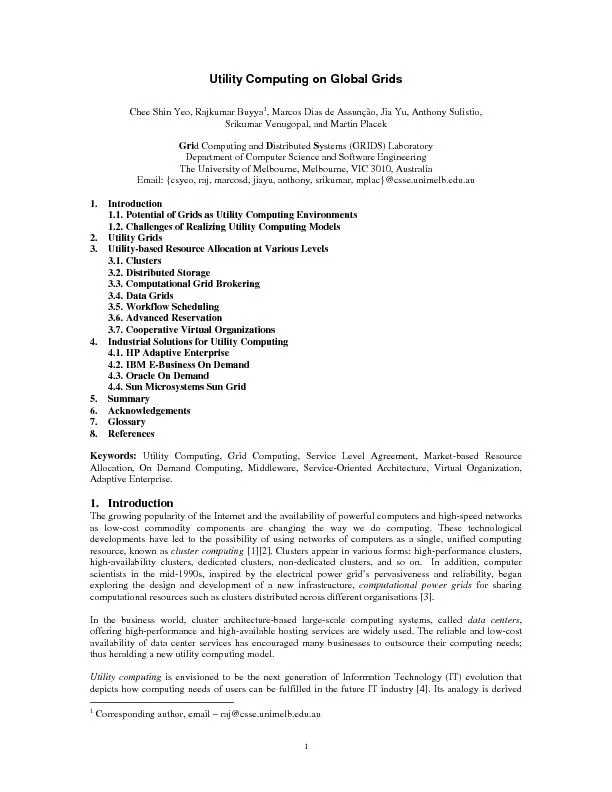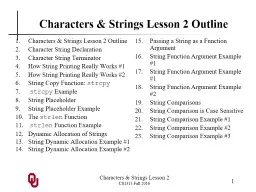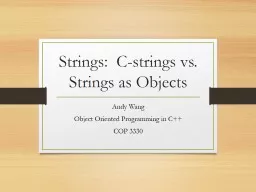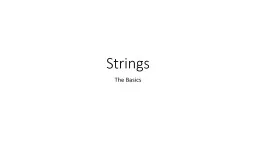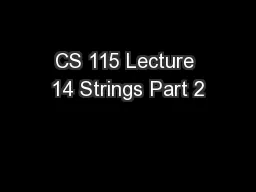PDF-1Arrays, Strings and Collections [1]Rajkumar BuyyaGrid Computing and D
Author : giovanna-bartolotta | Published Date : 2015-08-15
7Arrays are fixed length Length is specified at create timeIn java all arrays store the allocated size in a variable named
Presentation Embed Code
Download Presentation
Download Presentation The PPT/PDF document "1Arrays, Strings and Collections [1]Rajk..." is the property of its rightful owner. Permission is granted to download and print the materials on this website for personal, non-commercial use only, and to display it on your personal computer provided you do not modify the materials and that you retain all copyright notices contained in the materials. By downloading content from our website, you accept the terms of this agreement.
1Arrays, Strings and Collections [1]Rajkumar BuyyaGrid Computing and D: Transcript
Download Rules Of Document
"1Arrays, Strings and Collections [1]Rajkumar BuyyaGrid Computing and D"The content belongs to its owner. You may download and print it for personal use, without modification, and keep all copyright notices. By downloading, you agree to these terms.
Related Documents

![PDF-1Arrays, Strings and Collections [1]Rajkumar BuyyaGrid Computing and D](https://thumbs.docslides.com/108348/1arrays-strings-and-collections-1-rajkumar-buyyagrid-compu.jpg)

